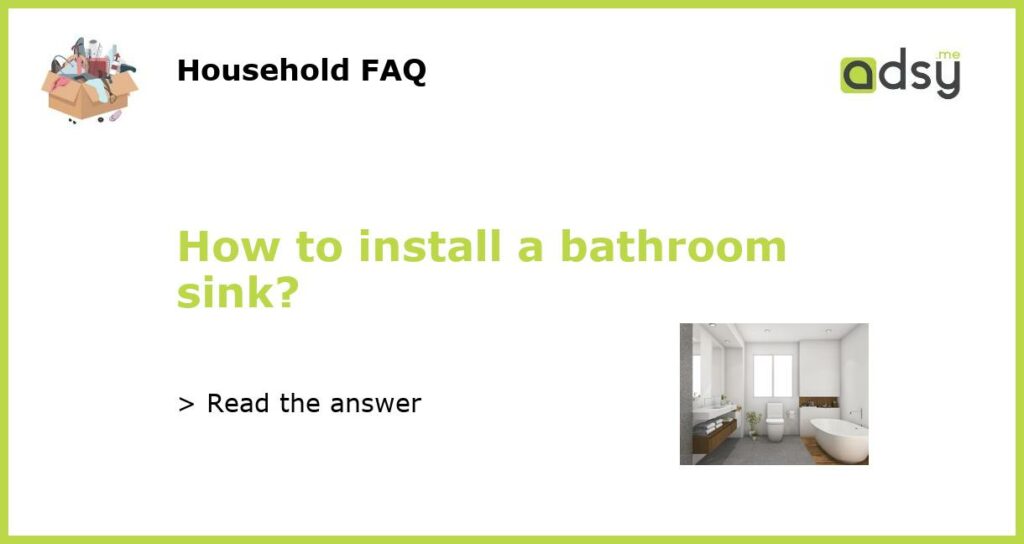Prepare the necessary tools and materials
Before you start installing a bathroom sink, it’s important to gather all the necessary tools and materials. Here’s a list of what you’ll need:
- Adjustable wrench
- Channel lock pliers
- Plumber’s tape
- Plunger
- Hacksaw
- Bucket
- Putty knife
- Sink drain assembly
- Sink mounting clips
- Silicone caulk
- Sink faucet
Shut off the water supply and disconnect the plumbing
The first step in installing a bathroom sink is to shut off the water supply. Locate the shut-off valves under the sink or at the main water supply and turn them clockwise to close. Next, disconnect the plumbing connections to the old sink. Use an adjustable wrench or channel lock pliers to loosen and remove the nuts connecting the water supply lines and the drain pipe. Have a bucket handy to catch any water that may spill out.
Remove the old sink
Once the plumbing connections are disconnected, you can remove the old sink. Start by cutting through any caulk or adhesive sealing the sink to the countertop or vanity using a putty knife. Carefully lift the sink out of its mounting and set it aside. If there is still water in the sink, use a plunger to remove it.
Install the new sink
Now it’s time to install the new sink. Begin by applying a thin bead of silicone caulk around the edge of the sink mounting hole. Carefully lower the sink into place, making sure it is centered and level. If your sink has mounting clips, use a screwdriver to secure them to the underside of the countertop or vanity. Once the sink is securely in place, connect the plumbing. Attach the drain assembly by threading it onto the sink drain, using plumber’s tape to ensure a watertight seal. Reconnect the water supply lines, making sure to tighten the nuts securely.
Test the sink and make any necessary adjustments
After the new sink is installed, turn the water supply back on and check for any leaks. If you notice any leaks, tighten the connections until the leaks stop. Test the sink by turning on the faucet and running water into the basin. Ensure that the water drains properly and that there are no unusual noises or issues. If everything is working correctly, clean up any excess caulk or debris and enjoy your newly installed bathroom sink!






